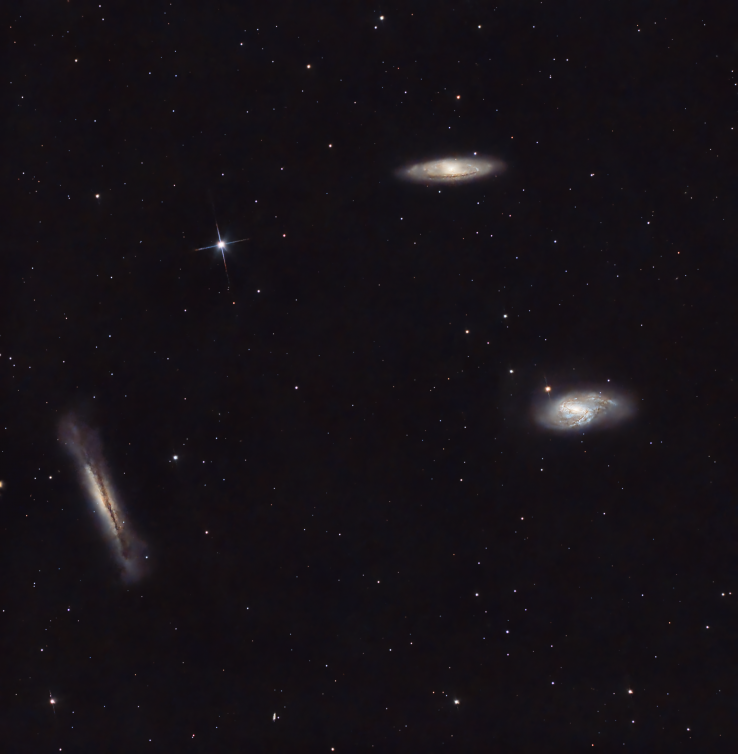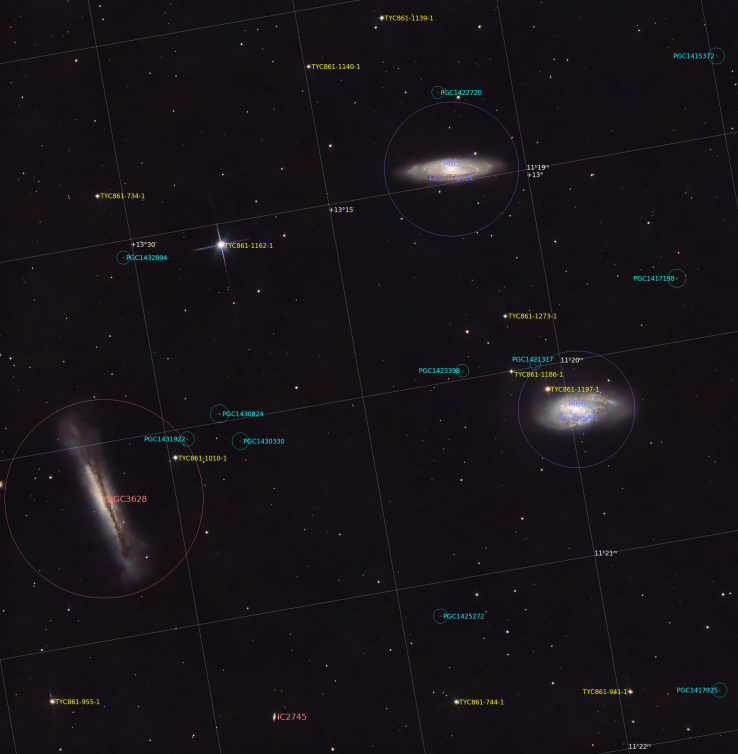The Leo Triplet (NGC 3628, M65, M66) from Bortle 9
6 hours from Athens with IDAS LPS P2 filter as a test to the new OSC CMOS camera. Did the job of achieving more integration time per frame but at the usual (in broadband) expense of color/info.
The Leo Triplet is a breathtakingly beautiful trio of galaxies located about 35 million light-years away from our Milky Way galaxy in the constellation Leo. This group of galaxies is composed of three magnificent spiral galaxies named Messier 65, Messier 66, and NGC 3628.
Messier 65 and Messier 66 are nearly identical in size and shape, both displaying striking spiral arms that are adorned with a plethora of young, bright stars. They are also both rich in interstellar gas and dust, which provides the raw material for new star formation.
NGC 3628, on the other hand, is more elongated and appears edge-on from our vantage point. It is a fascinating galaxy to observe, as it displays a prominent dust lane that appears as a dark ribbon cutting across its bright core.
The Leo Triplet is an excellent example of a galactic group, as the three galaxies are gravitationally bound to one another and are currently in the process of interacting. The gravitational forces between the galaxies cause their gas and dust to become compressed and heated, which triggers the formation of new stars.
In addition to being a stunning sight to behold, the Leo Triplet is also a valuable astronomical object for scientists to study. By observing the Leo Triplet, astronomers can gain insights into the formation and evolution of galaxies, as well as the role that interactions between galaxies play in shaping their properties over time.
Basic astrometry details
Astrometry.net job: 7465788
RA center: 11h19m54s.5
DEC center: +13°14′16″
Pixel scale: 1.187 arcsec/pixel
Orientation: 99.941 degrees
Field radius: 0.656 degrees
Resolution: 2784x2844
File size: 4.6 MB
Locations: Home obs, Athens, Greece
Data source: Backyard
Equipment
Imaging Telescopes Or Lenses : Sky-Watcher Explorer 130PDS
Imaging Cameras : ZWO ASI533MC
Mounts : Sky-Watcher NEQ6-Pro
Filters : IDAS LPS-P2 2"
Accessories : DIY Motorized Focuser
Software : Pleiades Astrophoto PixInsight · Stefan Berg Nighttime Imaging 'N' Astronomy (N.I.N.A. / NINA)
Acquisition details
Dates: March 24, 2023
Frames: IDAS LPS-P2 2": 124×180″(6h 12′)
Integration: 6h 12′
Avg. Moon age: 2.98 days
Avg. Moon phase: 9.70%

